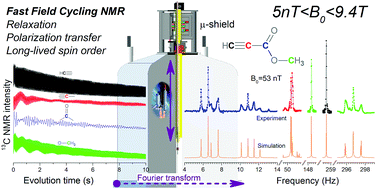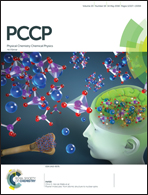Field-cycling NMR experiments in an ultra-wide magnetic field range: relaxation and coherent polarization transfer†
Abstract
An experimental method is described allowing fast field-cycling Nuclear Magnetic Resonance (NMR) experiments over a wide range of magnetic fields from 5 nT to 10 T. The method makes use of a hybrid technique: the high field range is covered by positioning the sample in the inhomogeneous stray field of the NMR spectrometer magnet. For fields below 2 mT a magnetic shield is mounted on top of the spectrometer; inside the shield the magnetic field is controlled by a specially designed coil system. This combination allows us to measure T1-relaxation times and nuclear Overhauser effect parameters over the full range in a routine way. For coupled proton-carbon spin systems relaxation with a common T1 is found at low fields, where the spins are “strongly coupled”. In some cases, experiments at ultralow fields provide access to heteronuclear long-lived spin states. Efficient coherent polarization transfer is seen for proton-carbon spin systems at ultralow fields as follows from the observation of quantum oscillations in the polarization evolution. Applications to analysis and the manipulation of heteronuclear spin systems are discussed.



 Please wait while we load your content...
Please wait while we load your content...